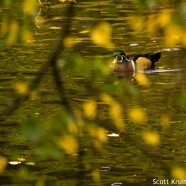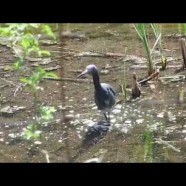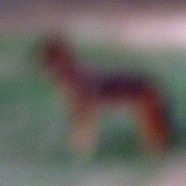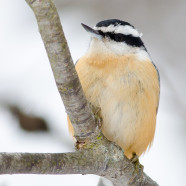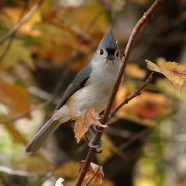Wood Duck (Aix sponsa)
I photographed this drake Wood Duck (Aix sponsa) from afar yesterday so as not to disturb it. As you can see it is looking right at home in a forested suburban pond. Many duck species are starting to appear more frequently in our area as we enter the autumn waterfowl season. We will be sure to share some of our finds with all of you. What new fall arrivals have you spotted? Scott Kruitbosch Conservation & Outreach Coordinator
Read MoreLittle Blue Heron (Egretta caerulea)
We don’t get to see too many Little Blue Herons foraging up close in a neighborhood pond on a spring day in the northeast…
Read MoreConnecticut’s friendly coyotes
Connecticut is a strange and unique region that often seems to me to be an open zoo along the coast and through the center of the state. These are the major population centers where natural habitat and resources have been severely reduced or strained. The tireless efforts of federal, state and local agencies, organizations and conservationists help to preserve and protect what is left. However, there is only so much that can be done with so little open space left in some areas. Packs of coyotes can be heard howling away nearly every night in this time of the year in my area of Connecticut....
Read MoreRed-breasted Nuthatch (Sitta canadensis) by Twan Leenders
Be sure to stock your feeders this morning as more snow is on the way to much of the country with a wintry mess on tap early to end the weekend and a possible significant lake effect snow event for our immediate region in the middle of next week. This Red-breasted Nuthatch, a personal friend of Twan’s, and your local pals appreciate it. There’s not much better than watching these little birds at your home during a snowy day.
Read MoreTufted Titmouse and the fall
The air may not feel like autumn as we have had much above-average temperatures during the first week of October. However, the leaves look like the fall season is here. The Tufted Titmouse (Baeolophus bicolor) is a common forest and feeder species spreading north and increasing in number. This is true throughout much of its range and is likely due to a combination of factors including rising global temperatures, especially in these parts of the United States, increased numbers of bird feeders and people feeding birds throughout the winter, and habitat change including the regrowth of...
Read More



